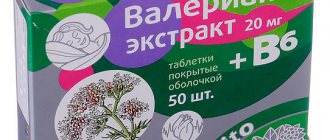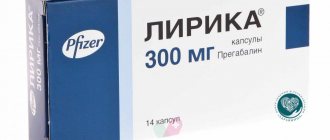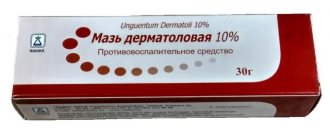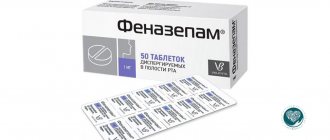Actemra is a drug used to treat advanced forms of rheumatoid arthritis. Available in the form of a solution, which is diluted with a 0.9% sodium chloride solution and administered intravenously (with a dropper). At the moment, it is difficult to find this medicine, and it costs about 15,000-20,000 rubles and more, which is associated with increased demand due to coronavirus infection.
Packaged in cardboard packs of 1 or 4 bottles each. The working solution is a colorless liquid with opalescence properties (scattering of light by large particles).
The drug is sold only with a prescription. It is stored in the refrigerator (dark place, temperature range from 2 to 8 degrees). Freezing is prohibited. Access by children should be excluded. The shelf life, provided the container remains intact, is 2.5 years from the date of production.
Indications and contraindications
The drug is used to treat rheumatoid arthritis in moderate and advanced stages. It is used as monotherapy, as well as in combination with a drug such as Methotrexate and other anti-inflammatory drugs.
There are several absolute contraindications in which the use of Actemra is excluded:
- active stage of development of infectious pathologies, including tuberculosis (you must first undergo fluorography to determine latent tuberculosis);
- hypersensitivity to the active substance of the drug or its additional components;
- immunization with a weakened vaccine (live viruses, bacteria, other infectious agents);
- period of pregnancy, breastfeeding (at any stage).
Use with caution is possible in the presence of the following pathologies:
- recurrent infection (chronic course);
- diabetes mellitus, diverticulitis and other pathologies that can provoke the development of infection;
- liver diseases;
- neutropenia.
Attention!
Overdose of the solution is not allowed. A violation was recorded in one case. The patient used a solution in an amount of 40 mg/kg body, and in his case there were no side effects. Healthy volunteers who received a solution in an amount of 28 mg/kg experienced symptoms of neutropenia (accompanied by an increased risk of developing infections).
Literature
- Moore JB, June CH Cytokine release syndrome in severe COVID-19. Science. 2020; 368(6490): 473–474. DOI:1126/science.abb8925
- Song P., Li W., Xie J., et al. Cytokine storm induced by SARS-CoV-2. Clin Chim Acta. 2020; 509:280–287. DOI: 10.1016/j.cca.2020.06.017
- Zhao Z., Wei Y., Tao C. An enlightening role for cytokine storm in coronavirus infection. Clin Immunol. 2021; 222: DOI: 10.1016/j.clim.2020.108615
- Lavillegrand JR, Garnier M, Spaeth A et al. Elevated plasma IL-6 and CRP levels are associated with adverse clinical outcomes and death in critically ill SARS-CoV-2 patients: inflammatory response of SARS-CoV-2 patients. Ann Intensive Care. 2021; 11(1): 9. DOI: 10.1186/s13613-020-00798-x
- Potempa LA, Rajab IM, Hart PC, et al. Insights into the Use of C-Reactive Protein as a Diagnostic Index of Disease Severity in COVID-19 Infections, Am J Trop Med Hyg. 2020; 103(2): 561–563. DOI: 10.4269/ajtmh.20-0473
- Yonas E., Alwi I., Pranata R., et al. Elevated interleukin levels are associated with higher severity and mortality in COVID 19. A systematic review, meta-analysis, and meta-regression. Diabetes Metab Syndr. Nov-Dec 2020; 14(6): 2219–2230. DOI: 10.1016/j.dsx.2020.11.011
- Conti P., Ronconi G., Caraffa A., et al. Induction of proinflammatory cytokines (IL-1 and IL-6) and lung inflammation by COVID-19: antiinflammatory strategies. J Biol Regul Homeost Agents. 2020; 4(2): 327–331. DOI: 10.23812/CONTI-E
- Moradian N., Gouravani M., Salehi MA, et al. Cytokine release syndrome: inhibition of pro-inflammatory cytokines as a solution for reducing COVID-19 mortality. Eur. Cytokine Netw. 2020; 31(3): 81–93. DOI: 10.1684/ecn.2020.0451
- Pum A., Ennemoser M., Adage T., Kungl AJ Cytokines and Chemokines in SARS-CoV-2 Infections—Therapeutic Strategies Targeting Cytokine Storm. Biomolecules. 2021; 11(1): DOI: 10.3390/biom11010091
- Chen J., Zhang L., Hou H., et al. Interleukin 6 signaling blockade treatment for cytokine release syndrome in COVID 19 (Review). Exp Ther Med. 2021; 21(1): 24. DOI: 10.3892/etm.2020.9456
- Crisafulli S., Isgrò V., La Corte L., et al. Potential Role of Anti-interleukin (IL) 6 Drugs in the Treatment of COVID 19: Rationale, Clinical Evidence and Risks. BioDrugs. 2020; 34(4): 415–422. DOI: 10.1007/s40259-020-00430-1
- Hashizume M. Outlook of IL-6 signaling blockade for COVID-19 pneumonia. Inflamm Regen. 2020; 40: DOI: 10.1186/s41232-020-00134-7
- Nasonov E., Samsonov M. The role of Interleukin 6 inhibitors in therapy of severe COVID-19. Biomed Pharmacother. 2020; 131: DOI: 10.1016/j.biopha.2020.110698
- Zhou Z., Price C. Overview on the use of IL-6 agents in the treatment of patients with cytokine release syndrome (CRS) and pneumonitis related to COVID-19 disease. Expert Opin Investig Drugs. 2020; 29(12): 1407–1412.DOI: 10.1080/13543784.2020.1840549
- Salvarani C., Dolci G., Massari M., et al. Effect of tocilizumab vs standard care on clinical worsening in patients hospitalized with COVID-19 pneumonia: A Randomized Clinical Trial. JAMA Intern Med. 2021; 181(1): 24–31. DOI: 10.1001/jamainternmed.2020.6615
- CORIMUNO-19 Collaborative group. Effect of anakinra versus usual care in adults in hospital with COVID-19 and mild-to-moderate pneumonia (CORIMUNO-ANA-1): a randomized controlled trial. Lancet Respir Med. 2021; 9(3): 295–304. DOI: 10.1016/S2213-2600(20)30556-7
- Stone JH, Frigault MJ, Serling-Boyd NJ, et al. Efficacy of Tocilizumab in Patients Hospitalized with Covid-19. N Engl J Med. 2020; 383(24): 2333–2344. DOI: 10.1056/NEJMoa2028836
- Nugroho CW, Suryantoro SD, Yuliasih Y., et al. Optimal use of tocilizumab for severe and critical COVID-19: a systematic review and meta-analysis F1000 Research 2022, 10:73 Proc Natl Acad Sci US A. 2020; 117(20): 10970–10975. DOI: 10.1073/pnas.2005615117
- Kow CS, Hasan SS The effect of tocilizumab on mortality in hospitalized patients with COVID-19: a meta-analysis of randomized controlled trials. Eur J Clin Pharmacol. 2021; 1–6. DOI: 10.1007/s00228-021-03087-z
- Berardicurti O., Ruscitti P., Ursini F., et al. Mortality in tocilizumab-treated patients with COVID-19: a systematic review and meta-analysis. Clin Exp Rheumatol. 2020; 38(6): 1247–1254.
- Kim MS, An MH, Kim WJ et al. Comparative efficacy and safety of pharmacological interventions for the treatment of COVID-19: A systematic review and network meta-analysis. PLoS Med. 2020; 17(12): e1003501. DOI: 10.1371/journal.pmed.1003501
- The REMAP-CAP Investigators, Gordon AC, Mouncey PR, et al. Interleukin-6 Receptor Antagonists in Critically Ill Patients with Covid-19 — Preliminary report. MedRxiv. 2022. DOI: 10.1101/2021.01.07.21249390
- Knight SR, Ho A, Pius R, et al. Risk stratification of patients admitted to hospital with covid-19 using the ISARIC WHO Clinical Characterization Protocol: development and validation of the 4C Mortality Score. BMJ. 2020; 370:m3339. DOI: 10.1136/bmj.m3339
- Catoire P., Tellier E., de la Rivière C., et al. Assessment of the SpO2/FiO2 ratio as a tool for hypoxemia screening in the emergency department. Am J Emerg Med. 2021; 44: 116–120. DOI: 10.1016/j.ajem.2021.01.092
- Wang X., Kattan M. W. Cohort Studies: Design, Analysis, and Reporting. Chest, 2020; 158(1S): S72– DOI: 10.1016/j.chest.2020.03.014
- Burmester GR, Rubbert-Roth A, Cantagrel A, et al. A randomized, double-blind, parallel-group study of the safety and efficacy of subcutaneous tocilizumab versus intravenous tocilizumab in combination with traditional disease-modifying antirheumatic drugs in patients with moderate to severe rheumatoid arthritis (SUMMACTA study). Ann Rheum Dis. 2014; 73(1): 69–74. DOI: 10.1136/annrheumdis-2013-203523
- Le RQ, Li L, Yuan W, et al. FDA approval summary: tocilizumab for treatment of chimeric antigen receptor T cell-induced severe or life-threatening cytokine release syndrome. Oncologist. 2018; 23(8): 943–947. DOI: 10.1634/theoncologist.2018-0028. Epub 2022 Apr 5.
- Kaminski M., Sunny S., Balabayova K., et al. Tocilizumab therapy for COVID-19: A comparison of subcutaneous and intravenous therapies. Int J Infect Dis. 2020; 101:59–64. DOI: 10.1016/j.ijid.2020.09.1447
- Navas N., Hermosilla J., Torrente-López A., et al. Use of subcutaneous tocilizumab to prepare intravenous solutions for COVID-19 emergency shortage: Comparative analytical study of physicochemical quality attributes. J Pharm Anal. 2020; 10(6): 532–545. DOI: 10.1016/j.jpha.2020.06.003
- Potere N., Di Nisio M., Rizzo G., et al. Low-dose subcutaneous tocilizumab to prevent disease progression in patients with moderate COVID-19 pneumonia and hyperinflammation. International Journal of Infectious Diseases. Int J Infect Dis. 2020; 100:421–424. DOI: 10.1016/j.ijid.2020.07.078
- Mazzitelli M., Arrighi E., Serapide F., et al. Use of subcutaneous tocilizumab in patients with COVID‐19 pneumonia. J Med Virol. 2021; 93(1): 32–34. DOI: 10.1002/jmv.26016
- Greco G., Ripamonti D., Binda F., et al. Potential Role of Subcutaneous Tocilizumab Injections in Patients With COVID-19 associated Pneumonia. J Med Virol. 2021; 93(2): 686–688. DOI: 10.1002/jmv.26494
- Mastroianni A., Greco S., Apuzzo G., et al. Subcutaneous tocilizumab treatment in patients with severe COVID-19 related cytokine release syndrome: An observational cohort study. EClinicalMedicine. 2020; 24: 100410. DOI: 10.1016/j.eclinm.2020.100410
- Di Nisio M., Potere N., Candeloro M., et al. Interleukin-6 receptor blockade with subcutaneous tocilizumab improves coagulation activity in patients with COVID-19. Eur J Intern Med. 2021; 83: 34–38. DOI: 10.1016/j.ejim.2020.10.020
- Ganyukova N.G., Likstanov M.I., Kosinova M.V. and etc. The effectiveness of targeted therapy with an IL-6 inhibitor (olokizumab) in relieving hyperinflammation in moderate pneumonia caused by the Sars-Cov-2 virus. Fundamental and clinical medicine. 2020; 5(4): 8–13.
- Tsvetov V.M., Matveev A.V., Sychev D.A. The feasibility of routine use of the drug olokizumab for COVID-19. Quality clinical practice. 2020; S4: 68–70.
- Potere N., Di Nisio M., Cibelli D., et al. Interleukin-6 receptor blockade with subcutaneous tocilizumab in severe COVID-19 pneumonia and hyperinflammation: a case–control study. Ann Rheum Dis. 2021; 80(2): 1–2. DOI: 10.1136/annrheumdis-2020-218243
- Malekzadeh R., Abedini A., Mohsenpour B., et al. Subcutaneous tocilizumab in adults with severe and critical COVID-19: A prospective open-label uncontrolled multicenter trial. Int Immunopharmacol. 2020; 89(Pt B): 107102. DOI: 10.1016/j.intimp.2020.107102
- Guaraldi G., Meschiari M., Cozzi-Lepri A., et al. Tocilizumab in patients with severe COVID-19: a retrospective cohort study. Lancet Rheumatol. 2020; 2(8): e474–e484. DOI: 10.1016/S2665-9913(20)30173-9
- De Rossi N., Scarpazza C., Filippini C., et al. Montichiari COVID-19 Study Group. Early use of low dose tocilizumab in patients with COVID-19: A retrospective cohort study with a complete follow-up. EClinicalMedicine. 2020; 25: DOI:10.1016/j.eclinm.2020.100459
- Sciascia S., Aprà F., Baffa A., et al. Pilot prospective open, single-arm multicentre study on off-label use of tocilizumab in severe patients with COVID-19. Clin Exp Rheumatol. 2020; 38(3): 529–532.
- Takeuchi T, Smolen JS, Choy EH, et al. Considering new lessons about the use of IL-6 inhibitors in arthritis. Considerations in Medicine. 2018; 2:7–11. DOI: 10.1136/conmed-2018-000002
- Smolen JS, Aletaha D, Choy EH, et al. Targeting IL-6: A review of data. Considerations in Medicine. 2018; 2: 12–18. DOI: 10.1136/conmed-2018-000003
- Ministry of Health of Russia. Temporary guidelines “Prevention, diagnosis and treatment of new coronavirus infection (COVID-19)” version 10 (02/08/2021) [Electronic resource]. Access mode: https://staticminzdrav.gov.ru/system/attachments/attaches/000/054/588/original/%D0%92%D1%80%D0%B5%D0%BC%D0%B5%D0% BD%D0%BD%D1%8B%D0%B5_%D0%9C%D0%A0_COVID-19_%28v.10%29-02/08/2021_%281%29.pdf. Link active as of 03/03/2021. . Access mode of the Ministry of Health of Russia Temporary guidelines “Prevention, diagnosis and treatment of new coronavirus infection (COVID-19)” version 10 (02/08/2021) . Available from: https://static0.minzdrav.gov.ru/system/attachments/attaches/000/054/588/original/%D0%92%D1%80%D0%B5%D0%BC%D0%B5% D0%BD%D0%BD%D1%8B%D0%B5_%D0%9C%D0%A0_COVID-19_%28v.10%29-02/08/2021_%281%29.pdf (accessed 03/03/2021). (In Russ)]
- Rudnov V.A., Kulabukhov V.V. SEPSIS-3: Updated key messages, potential problems and next practical steps. Bulletin of anesthesiology and resuscitation. 2016; 13(4): 4–11.
Side effects
In most cases, taking the drug does not cause side effects. But sometimes the following manifestations are observed:
- infection of the upper respiratory tract;
- itching, rash, less often urticaria;
- headaches;
- dizziness;
- increased blood pressure;
- hypersensitivity reactions.
If side effects occur, you must stop taking the drug and undergo treatment. If the condition worsens, seek emergency medical attention.
Instructions for use "Actemra"
The solution is given as an intravenous injection or as a dropper for 60 minutes, maximum once a month. The drug is diluted to a total volume of 100 ml using saline solution of 0.9% sodium chloride. To do this, it is necessary to treat the surface of the skin with alcohol or another antiseptic.
When preparing the solution, follow the following instructions:
- Measure out the required amount of the drug in the amount of 0.4 ml per 1 kg of body weight.
- Take a disposable syringe and withdraw 100 ml of 0.9% sodium chloride solution.
- Another disposable syringe is used to measure the Actemra solution.
- After this, mix the working solution with a sodium chloride solution.
- Mix thoroughly, carefully turning the bag up and down. In this case, it is important to avoid foaming and check the contents of the package (visually) for the absence of any particles or suspension.
- You also need to make sure that the solution is colorless or has a faint light yellow color.
- Turn the bag over and insert an IV.
Analysis of other publications
Stebbing J et al. [13] reviewed registered drugs from the perspective of potential use in COVID-19 and inhibition of clathrin-dependent endocytosis and thereby inhibition of viral infection of cells, predicted by artificial intelligence in silico. Drug targets include members of the insensitive kinase (NAK) family, including AAK1 and GAK, the inhibition of which has been shown to reduce viral infection in vitro [14][15]. Baricitinib was identified as a NAK inhibitor with particularly high affinity for AAK1, a master regulator of clathrin-dependent endocytosis. The authors suggested that this drug may be useful in counteracting SARS-CoV-2 infections, subject to appropriate clinical trials. Next, the authors identified and compared 3 drugs: baricitinib, ruxolitinib and fedratinib. After comparison, the authors conclude that although the three candidates have similar JAK (Janus kinase) inhibitor potencies, the high affinity for AAK1 suggests baricitinib is the best of the group, especially given its once-daily oral dosing and acceptable safety profile. .
Drug interactions and special instructions
Actemra should be used with caution in combination with drugs that are labeled CYP. Also, the use of Actemra requires careful monitoring of patients who use or have previously used the following drugs:
- "Atorvastatin";
- "Warfarin";
- "Fenitonn";
- "BKK";
- "Cyclosporine";
- "Theophylline";
- benzodiazepine-based drugs.
Since Actemra weakens the therapeutic effect of these drugs, you may need to increase the dosage (in consultation with your doctor). It is also important to understand that the active ingredient in Actemra (tocilizumab) is eliminated slowly, so its indirect effects on the body may persist for several weeks after complete withdrawal.
Taking the drug during pregnancy and lactation is undesirable, since it can affect the child’s immune system and the characteristics of intrauterine development.
Introduction
Baricitinib (trade name Olumiant) is a selective immunosuppressant, a reversible inhibitor of Janus kinase 1 and 2 (JAK1 and JAK2) [1].
Janus kinases (JAKs) are enzymes that transduce intracellular signals from cellular receptors for a number of cytokines and growth factors involved in hematopoiesis, inflammation and the immune response. As part of the intracellular signaling pathway, Janus kinases phosphorylate and activate STATs (signal transporters and activators of transcription), which in turn activate gene expression in the cell. Baricitinib modulates these signaling cascades by partially inhibiting the enzymatic activity of JAK1 and JAK2, thereby reducing STAT phosphorylation and activation. Indication for medical use of baricitinib, according to the instructions for medical use: treatment of active moderate or severe rheumatoid arthritis in adult patients intolerant of or lack of adequate response to treatment with one or more disease-modifying antirheumatic drugs.
Taking into account the effect of baricitinib on the immune response by disrupting the transduction of intracellular signals from cellular receptors for a number of cytokines (IL-6) and growth factors, the presumed effectiveness of baricitinib in the “cytokine storm” observed in severe COVID-19 is discussed.
A cytokine storm is a cascading uncontrolled increase in the level of cytokines in the blood, which can lead to an excessive immune response and damage to organs and tissues [2]. It has been established that with COVID-19, lymphohistiocytolysis also occurs, which leads to a cytokine storm, subsequently to multiple organ failure [3]. In 50% of cases, acute respiratory distress syndrome develops [3].









